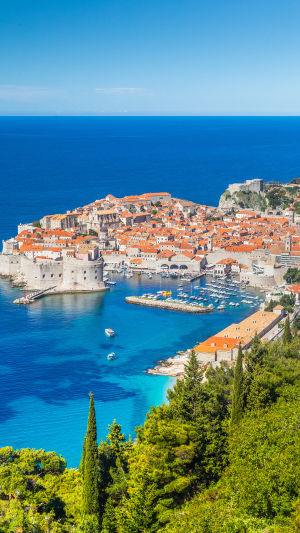Dalmatia, the southernmost region of Croatia, epitomizes a coastal haven, globally renowned for its exquisite Venetian cities lining the coastline and the enchanting islands that grace its shores.
Dear Lykkers, if you're seeking a destination that offers a diverse range of experiences, from beaches and urban exploration to rich history, gastronomy, boat excursions, hiking, and natural wonders, Dalmatia stands out as an unparalleled choice.
<h3>When's the best time to go to Dalmatian Coast?</h3>
The optimal time to visit the Dalmatian Coast is during the shoulder seasons, typically in spring (April to June) or autumn (September to October).
These periods offer milder weather, fewer crowds, and more affordable prices compared to the peak tourist months of July and August, when temperatures soar, crowds swell, and prices escalate.
<h3>How to get around Dalmatian Coast</h3>
Navigating the Dalmatian Coast is relatively straightforward, with seven international airports serving as popular entry points, notably Split, Zadar, and Dubrovnik.
As Croatia is a member of the European Union, E.U. visa regulations are applicable. Regular ferry services connect the mainland to the islands, with additional routes during the bustling high season to accommodate increased demand.
<h3>Beaches</h3>
The Dalmatian Coast boasts an abundance of beaches stretching for miles along its coastline. While many are adorned with pebbles, such as <b>Banje</b> just outside Dubrovnik's city walls.
Access to all beaches is complimentary, though you may need to rent accessories like sunbeds, readily available from shacks near the shore. Beyond the popular beaches, numerous secluded coves and bays offer opportunities for serene Adriatic dips.
<h3>Culture in Dalmatian Coast</h3>
The Dalmatian Coast is rich in cultural heritage, boasting several UNESCO World Heritage Sites, with Dubrovnik's historic walled old town standing as one of the most renowned. Originally constructed for defense purposes, these walls now offer visitors a picturesque panorama of the city and its surroundings.
In Split, near the bustling harbor, lies Diocletian's Palace, a 4th-century marvel built for the Roman emperor, maintaining its historic significance as the most intact Roman palace globally. Additionally, the nearby historic town of Trogir, recognized for its architectural treasures, has earned its UNESCO status, further enhancing the region's cultural allure.
<h3>For travelers to the Dalmatian Coast, here are some practical details to keep in mind:</h3>
1. Croatian is the official language, although English and German are widely spoken.
2. The local currency is the kuna, but euros are accepted in hotels and tourist accommodations.
3. ATMs are prevalent in larger destinations but may be less common on smaller islands, so plan accordingly.
4. Transportation options include bus and ferry services, with the alternative of renting scooters or cars for more flexibility.
5. Tipping etiquette typically involves leaving a standard gratuity of around 10 percent.
6. Electricity runs on 220 volts, and plug types C and F are standard. Travelers from regions with 110-volt systems should consider bringing a voltage converter and adapter for their electronic devices.
Lykkers, if you're craving a trip that's equal parts relaxation and adventure, then Dalmatia is where it's at. From hiking to island hopping to savoring local delicacies, there's never a dull moment on the Dalmatian Coast. So, are you in for the ultimate Mediterranean escape?





